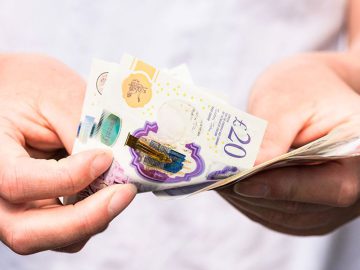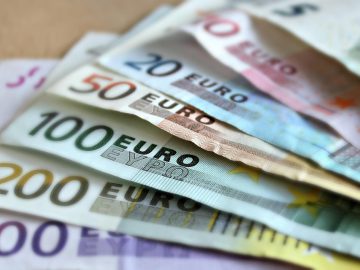What Are Dividend Stocks, Anyway?
No, they’re not magic coupons or glitter-covered IOUs from rich CEOs…
Imagine this. You buy a slice of a company, and that company hands you a little wad of cash every few months just for holding on to your slice. Like… thanks for believing in us, here’s your snack money.
That’s a dividend stock. It’s a regular stock from a company that chooses to share part of its profits with investors like you in the form of dividends. Some do it quarterly. Some monthly. Some even hike it up every year like a birthday bonus. That payout? That’s your passive income baby.
You’re not gambling like in crypto, and you’re not crossing your fingers hoping your garage invention goes viral. This is the “wear fuzzy socks, sip tea, and watch your income grow slowly” strategy. Not flashy, but powerful. Especially if you’re a fan of consistency, long-term thinking, and not living off ramen after retirement.
Think of dividend stocks like the tortoise in that fable. They’re not flashy. They don’t do backflips. But slow and steady really does win the race – especially when that race is “retire without eating instant noodles for the rest of your life.”
How Dividend Investing Works
AKA the part where we break it down like a Netflix docuseries with less drama and more commas.
When you buy a dividend-paying stock, you’re becoming a part-owner of that company. Instead of waiting years to sell for profit (like growth stocks), dividend stocks pay you while you own them. Here’s how it plays out:
- Company earns money
- Company shares a slice of that money with shareholders
- You receive a dividend (cash!) based on how many shares you own
- You can reinvest those dividends to buy more stock (hello compounding!), or
- You can cash out and use it for groceries, travel, or even a fancy wheel of cheese if you’re living large
This turns your portfolio into a magical little factory. Every month or quarter, it cranks out mini cash presents. Multiply that by decades? You’re not just growing money – you’re farming it.
Big names like Coca-Cola, Procter & Gamble, and Johnson & Johnson are famous for paying steady dividends for DECADES. That’s the secret sauce: these aren’t random gambles. They’re companies that have weathered world wars, market crashes, and the Great TikTok Migration.
How to Choose the Right Dividend Stocks
Because not all “dividend darlings” are created equal… some are sneaky snakes with glittery promises.
The Internet is full of stocks that look shiny but act like moody raccoons once you let them in. So how do you separate the winners from the whiners? Simple – use a few key filters, and don’t get hypnotized by the biggest percentage sign you see.
Check the Dividend Yield
This is the % you get back annually based on the stock price. For example, if a stock is $100 and pays $4/year, the yield is 4%. But just because a yield looks juicy doesn’t mean it’s good for your financial digestion.
- 2%-6% is your sweet spot. That’s healthy, sustainable, and not secretly screaming “I’m risky!”
- Over 7%? Be suspicious. That’s usually a stock in distress, like a building with flashy lights but broken plumbing.
- Under 1%? That’s like a birthday party with no cake. You technically showed up, but what’s the point?
Think of yield like hot sauce: too little and it’s boring, too much and your eyebrows sweat. Find the middle ground.
Look for Dividend Growth
You want companies that don’t just pay, they raise. Look for ones that have a habit of increasing their dividends like clockwork. Because hey, if your paycheck got a raise every year, you’d be thrilled, right?
Search for the magical creatures called Dividend Aristocrats – companies that have raised dividends for 25+ years straight. Then there are the rare majestic beasts: Dividend Kings, who’ve done it for 50+ years. These aren’t startups with wild moods – they’re reliable like grandpas who always bring candy and dad jokes.
A rising dividend means the company is doing well and likes to share. A stagnant one? Might be resting on past glory. A shrinking one? Run, friend. Run like a squirrel spotted by a dog.
Watch the Payout Ratio
This is how much of the company’s earnings they give to you as dividends. If they give away too much, they might be headed for a fiscal faceplant.
- Under 60% = very healthy. They’re keeping enough cash to run the business and still paying you.
- 60%-80% = fine, but keep your eye on it.
- Over 100%? They’re literally giving away more than they earn. That’s like me trying to run a cookie shop while handing out cookies for free every hour. It won’t last long.
If the payout ratio is out of control, the dividend is probably unsustainable. You want your passive income built on granite, not jello.
How to Get Started With Dividend Investing
Step-by-step, like a recipe for money lasagna.
Step 1: Open a Brokerage Account
Pick a platform that’s beginner-friendly and low-cost. Some solid options:
- Fidelity – reliable, grown-up vibes
- Charles Schwab – great tools, super solid
- Robinhood – great for starting small (just keep your eye on the fine print)
Look for the option to automatically reinvest dividends. That’s like setting your plants to self-water – they grow while you nap.
Step 2: Research and Pick Your Stocks
You can go solo with individual stocks or bundle up with dividend ETFs. Starting with ETFs is like riding a tricycle before you hop on a Harley. It’s smart.
Beginner-friendly dividend ETFs:
- VYM (Vanguard High Dividend Yield ETF)
- SCHD (Schwab U.S. Dividend Equity ETF)
- DVY (iShares Select Dividend ETF)
Prefer to pick your own? Use research tools like:
- Simply Safe Dividends (Paid)
- Seeking Alpha (Free & Paid)
- Yahoo Finance (Free)
You don’t need a ton of stocks. Even 5-10 solid ones will get your portfolio humming.
Step 3: Buy Your First Shares
Click. Boom. You’re an investor.
Buy your first share – even just one – and you’ve officially planted a money tree. Dividend investing isn’t about how much you start with. It’s about consistency over time.
Tip: Turn on dividend reinvestment (called DRIP – Dividend Reinvestment Plan). It’s the turbo button for compounding.
Step 4: Monitor Once a Quarter
Don’t obsess daily. Just peek in every few months to see:
- Is the company still paying dividends?
- Did they cut or raise the payout?
- Is anything weird happening (mergers, lawsuits, sudden drops)?
Most dividend stocks are chill. But a quick check-in helps you avoid surprises.
Step 5: Celebrate the Checks
Even if it’s just 87 cents – that’s passive income! That’s your portfolio whispering, “Hey buddy, I’m working for you.” Treat yourself. Print it. Frame it. Buy a chocolate bar. You earned that.
This is the magic of dividend investing. Even small payouts add up when you give them time and reinvestment power.
When to Cash Out and Take the Income
Because you don’t want to be 92 and still yelling at your brokerage account.
There’s no perfect answer, but here are signs it might be time to stop reinvesting and start enjoying the cash:
- You’ve hit retirement (or dream-retirement-lite)
- Your dividends now pay for actual bills
- You want to fund a big goal – vacation, side hustle, yearly giraffe sponsorship (live your dreams!)
Most brokerages let you toggle between “reinvest” and “cash out.” Do what makes sense for your phase of life.
Think of dividends like pizza slices. In your 30s, you stack them for later. In your 60s, you EAT that pizza.
Pros and Cons of Dividend Investing
Let’s not pretend this is all rose petals and confetti cannons.
The Perks:
- You earn money while doing literally nothing
- Less volatile than growth stocks
- Ideal for long-term planners
- Reinvesting leads to compounding superpowers
- You can build a reliable income stream without selling your shares
The Pitfalls:
- It’s a slow game – not for adrenaline junkies
- Dividends are taxable outside of retirement accounts
- Yield chasers sometimes fall into value traps
- Not every dividend is forever – companies can cut payments
It’s a marathon, not a hot dog eating contest. But if you want wealth that’s stable, scalable, and snooze-friendly – dividend stocks might just be your jam.
Key Takeaways
- Dividend stocks pay you just for owning them – like a thank-you note with cash inside
- Aim for 2%-6% yield – with a history of consistent growth and good payout ratios
- Dividend ETFs are great for beginners – think of them as starter packs with training wheels
- Reinvest your dividends early – to unlock snowball effects that build over decades
- Don’t chase high yields blindly – the best dividend portfolios are steady, not flashy
Does Dividend Investing sound like its right for you? If so, why not this very instant go forth and check it out? Your future earnings might thank you.
Enjoy!






